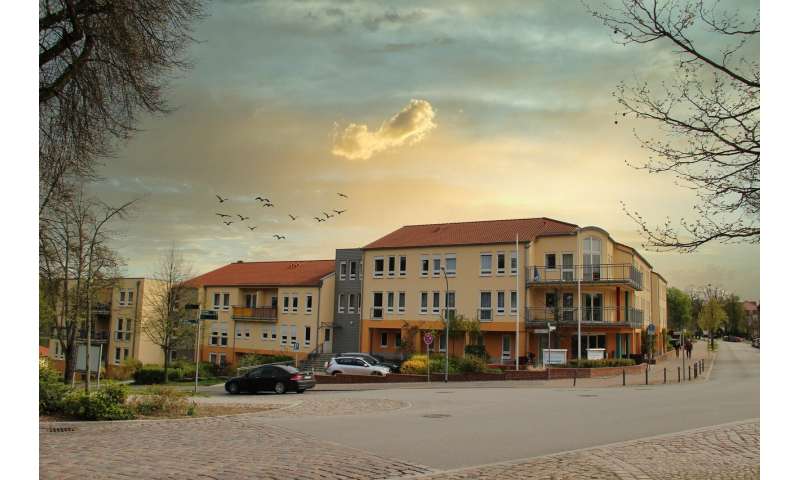Tuned lighting helps nursing home residents get better sleep, study finds

Nursing home residents tend to fall asleep at all hours of the day, and during the night, their sleep may be interrupted by periods of wakefulness.
It’s a vicious cycle of fragmented sleep that can place residents at risk for poor health outcomes, including depression and increased frailty, said Rosa Baier, an associate professor of the practice in health services, policy and practice who directs the Center for Long-Term Care Quality & Innovation at the Brown University School of Public Health.
But Baier and a team of colleagues identified an innovative way to cut in half the number of sleep disturbances experienced by residents in one California nursing home—and it didn’t involve prescribing sleeping pills. Instead, the facility installed interior lighting fixtures that change color and intensity over the course of the day and night.
“I think it’s pretty novel,” Baier said of the tuned lighting solution, which mimics natural light occurring during a 24-hour day. “The technology continues to evolve, and so one of the reasons we wanted to study these lights was that there hadn’t been research done on this kind of lighting.”
Baier led a team of seven researchers who studied the use of tuned LED lighting at ACC Care Center, a 99-bed nursing home in Sacramento, California, participating in a pilot lighting installation by the Sacramento Municipal Utility District and the U.S. Department of Energy Pacific Northwest National Laboratory.
The team’s results, published in Seniors Housing and Care Journal on Monday, Oct. 5. established preliminary data that can be used as providers in the long-term care industry consider the adoption of tuned lighting in other facilities.
Prior research had found that nursing home residents likely receive too little light during the day and too much at night. So the researchers randomly assigned corridors where a total of 63 long-term care residents experienced either tuned or static lighting conditions for two months, then switched the corridors to the other lighting. The tuned lighting brightened corridor lighting in the day and dimmed it during the night. The static condition mimicked the fluorescent lighting in place at the facility prior to installation of the tunable fixtures. The study spanned the period of December 2018 through March 2019.
Thirty-five of the 63 residents had been diagnosed with dementia, which is associated with conditions that include delusions, hallucinations, depression, agitation, anxiety, disinhibition, irritability and wandering. The mean age of residents in the study was 88.3 years old and 71% of them were women.
The study found that, on average, the residents experienced 3.6 nighttime sleep disturbances with static lighting compared to 1.8 with tuned lighting. Baier said the results weren’t wholly surprising given the research team hypothesized the intervention would have a positive effect on sleep.
“We do know that there is a relationship between exposure to natural light and circadian rhythm, and circadian rhythm is important for healthy sleep,” Baier said. “It’s very reasonable to think that this might be a particular problem in this setting and something that we could address through environmental practices.”
The study suggested that improving the sleep of even a few residents can have a positive effect on roommates and those in nearby rooms. Many of the residents in the study share rooms of two to as many as four people. Other research has demonstrated that the sleep habits of roommates can often determine whether a resident has a good night’s sleep or not.
Tuned lighting systems first appeared on the market in 2014. They are more expensive than static fixtures because they have more than one color of LED chip inside, allowing for the mixing of warm and cool white. But the cost has decreased as sales volume has increased, according to study co-author Naomi Miller, senior lighting research scientist at the Pacific Northwest National Laboratory in Portland, Oregon.
Nursing homes first turned to these systems primarily for their energy savings feature. But Baier and her colleagues consider them a low-risk intervention to improve sleep and one that the long-term care industry should strongly consider at a time when nursing homes are shifting staff time and resources to contend with the coronavirus pandemic.
Source: Read Full Article


